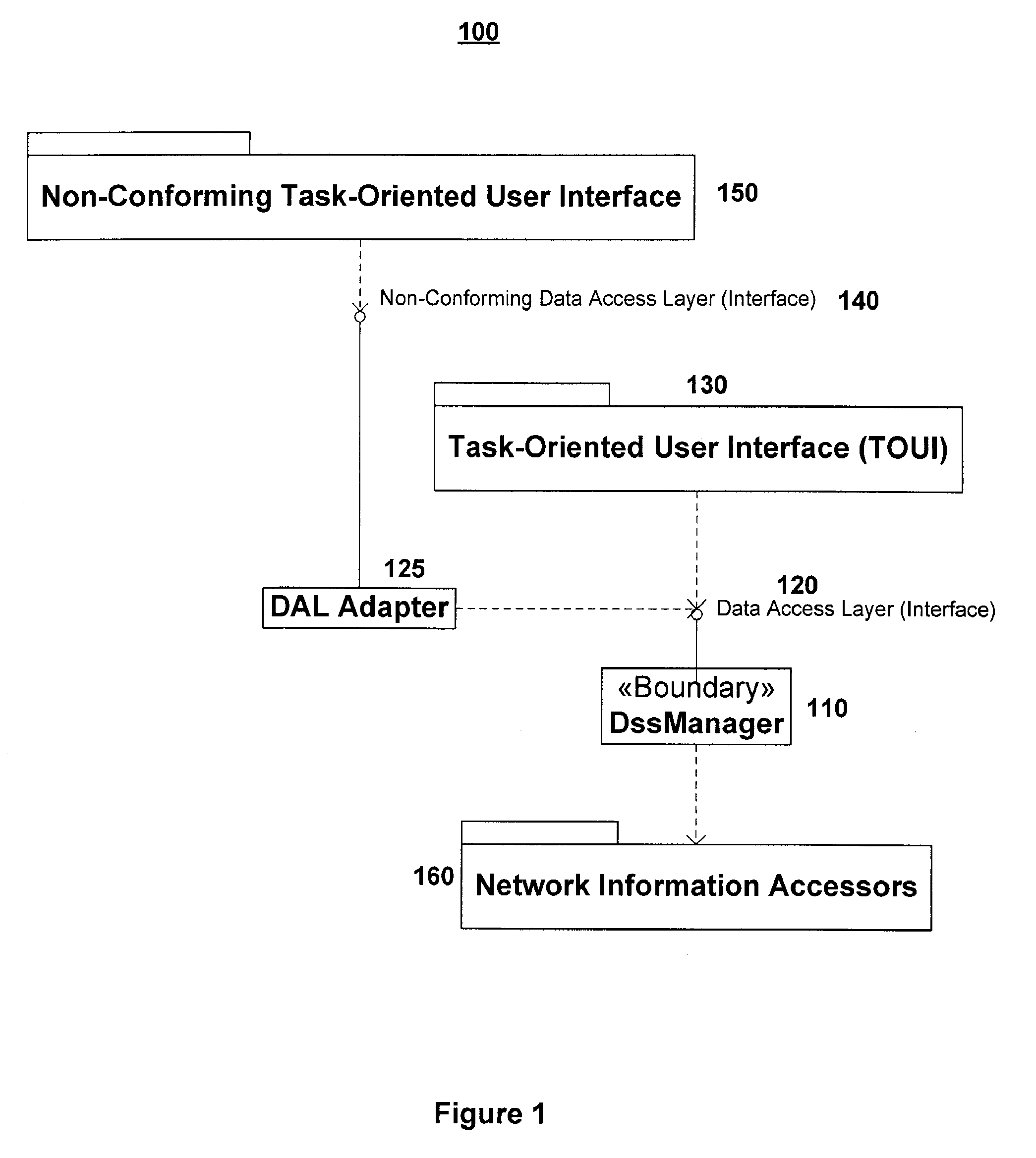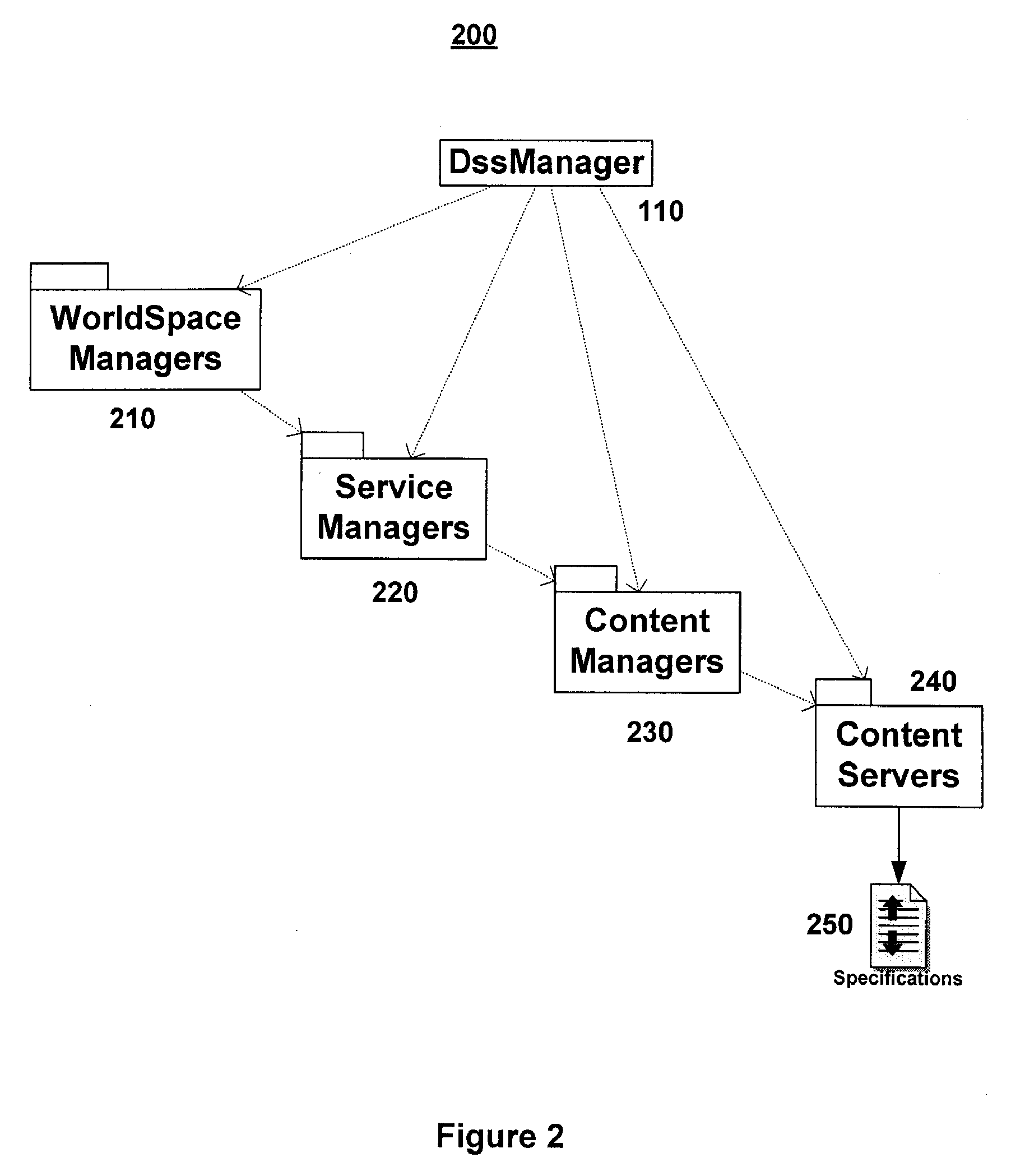Global information architecture
a technology of information architecture and global information, applied in the field of information technology, can solve the problems of insufficient requirements, inability to share information, and new challenges created by the use of computers, and achieve the effect of facilitating interoperability and deployment and high efficiency
- Summary
- Abstract
- Description
- Claims
- Application Information
AI Technical Summary
Benefits of technology
Problems solved by technology
Method used
Image
Examples
Embodiment Construction
[0040]Further features and advantages of the invention, as well as the structure and operation of various embodiments of the invention, are described in detail below with reference to the accompanying FIGS. 1-6. The embodiments of the invention are described in the context of a military computing infrastructure such as the Global Information Grid (GIG) envisioned by the U.S. Department of Defense (DoD). Nonetheless, one skilled in the art recognizes that the present invention is applicable to any information infrastructure, particularly those in which dynamically changing conditions require a flexible information management environment. In the current state of standardization of information systems, many discreet types of information environments exist. The integration of these environments to create unique communities of interest is often expensive and risky due to the extensive software development required. The present invention overcomes these difficulties by enabling the creati...
PUM
 Login to View More
Login to View More Abstract
Description
Claims
Application Information
 Login to View More
Login to View More - R&D
- Intellectual Property
- Life Sciences
- Materials
- Tech Scout
- Unparalleled Data Quality
- Higher Quality Content
- 60% Fewer Hallucinations
Browse by: Latest US Patents, China's latest patents, Technical Efficacy Thesaurus, Application Domain, Technology Topic, Popular Technical Reports.
© 2025 PatSnap. All rights reserved.Legal|Privacy policy|Modern Slavery Act Transparency Statement|Sitemap|About US| Contact US: help@patsnap.com



